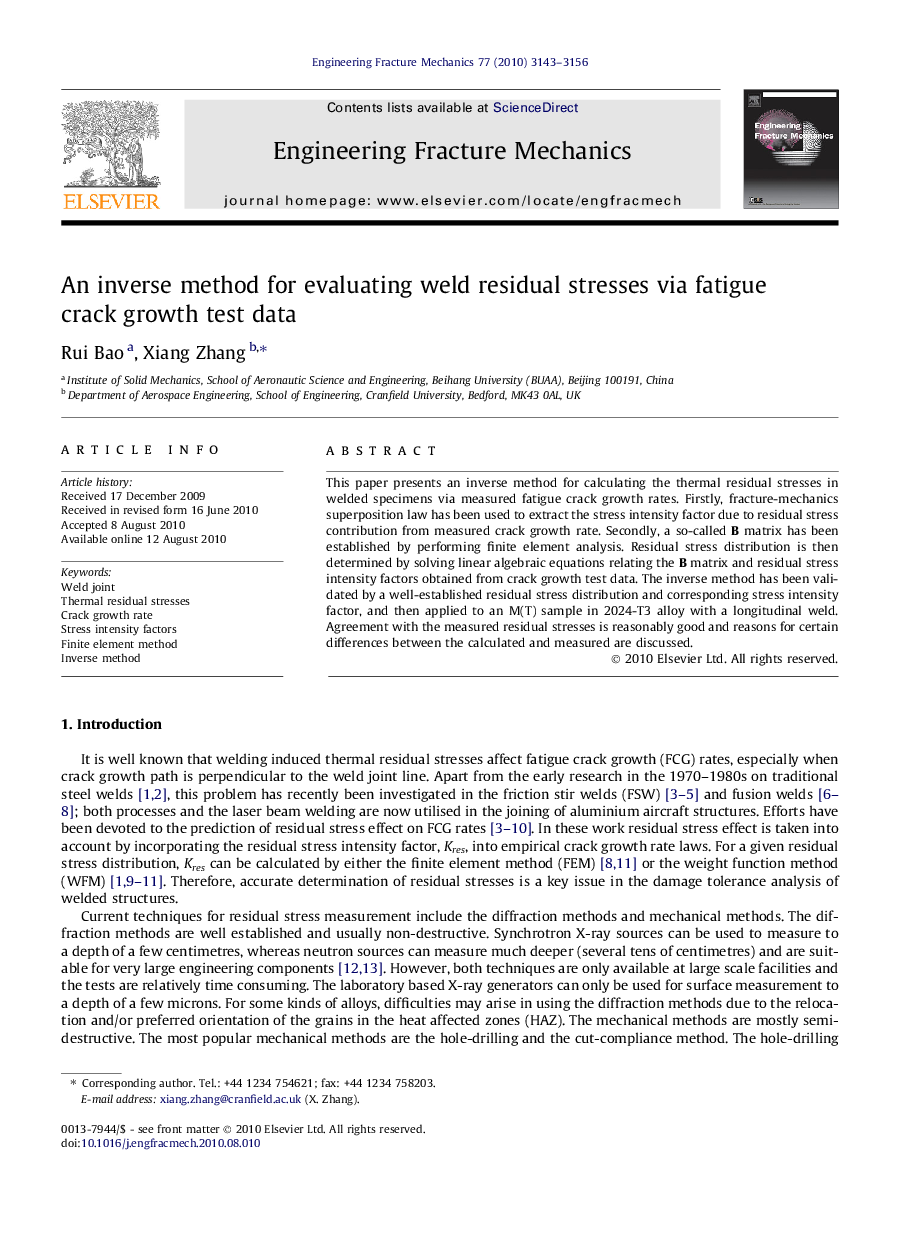| Article ID | Journal | Published Year | Pages | File Type |
|---|---|---|---|---|
| 775395 | Engineering Fracture Mechanics | 2010 | 14 Pages |
This paper presents an inverse method for calculating the thermal residual stresses in welded specimens via measured fatigue crack growth rates. Firstly, fracture-mechanics superposition law has been used to extract the stress intensity factor due to residual stress contribution from measured crack growth rate. Secondly, a so-called B matrix has been established by performing finite element analysis. Residual stress distribution is then determined by solving linear algebraic equations relating the B matrix and residual stress intensity factors obtained from crack growth test data. The inverse method has been validated by a well-established residual stress distribution and corresponding stress intensity factor, and then applied to an M(T) sample in 2024-T3 alloy with a longitudinal weld. Agreement with the measured residual stresses is reasonably good and reasons for certain differences between the calculated and measured are discussed.
